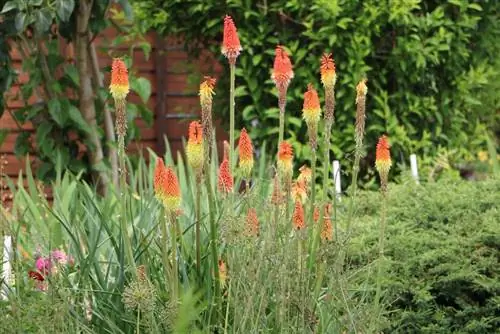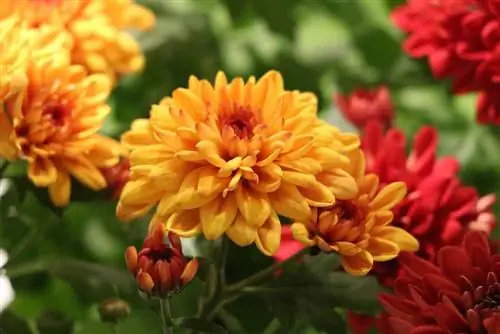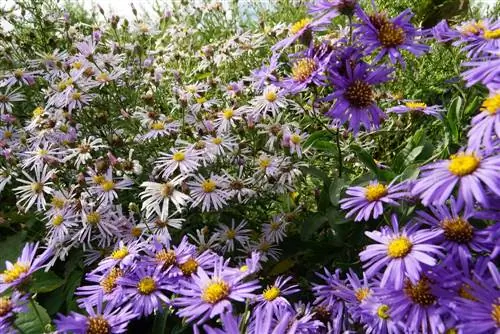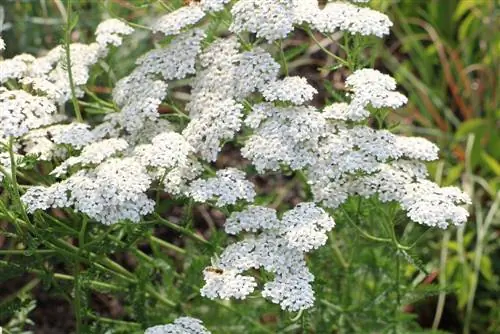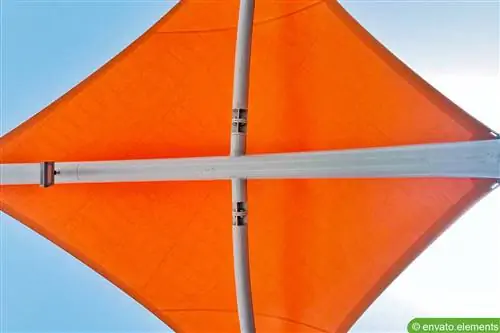- Author admin [email protected].
- Public 2023-12-17 03:39.
- Last modified 2025-06-01 06:48.
Autumn flowers for the balcony and terrace that are easy to care for and will delight you for years are not available in endless quantities. Fortunately, there are many autumn flowers that bloom particularly beautifully or look particularly extravagant, especially among the hardy perennials. These perennials are presented below:
Beautiful and distinctive autumn flowers
There are a few perennials that bring flowers to balconies and terraces in autumn or well into autumn:
Pure flower beauty
Among the not so numerous autumn flowers are many perennials with particularly beautiful flowers: autumn monkshood and autumn anemone, blue and white forest asters, cushion asters and golden hair asters, smooth aster and smooth-leaf asters, Tatar Asters and prairie asters, mock chamomile, perennial marigolds and perennial sunflowers, lily hostas, torch lilies and autumn daisies, gold bulbs and coneflowers and toad lilies - they all produce many magnificent flowers, usually in several cultivars, which adorn the balcony/terrace in almost any desired color. Many of these perennials grow at heights suitable for balconies, others shine in large pots where they grow into extraordinary eye-catchers. For a detailed list of fall-blooming varieties with botanical names and cultivar names, see “The most beautiful fall bloomers - hardy perennials and more.”
Aparte autumn flowers
If you not only think that pure beauty quickly becomes boring when it comes to film and television stars, but also like to design something unusual on your balcony/terrace, there are also the right autumn-flowering perennials for you:
- Anemarrhena asphodeloides, Mother's Commemoration, Zhi Mu
- Artemisia ludoviciana, silver perennial wormwood, varieties 'Silver Queen' and 'Valerie Finnis'
- Artemisia pontica, Pontic wormwood
- Artemisia lactiflora, Chinese mugwort, varieties 'Ivory' and 'Guizho'
- Aster pansos, ‘Snowflurry’ carpet myrtle aster
- Aster laterifolius 'Horizontalis' calico aster, varieties 'Horizontalis' and 'Prince'
- Aster universum, small-flowered aster, varieties 'Pink Star' and 'Schneelatter'
- Aster laevis x ericoides, wild smooth-leaf aster
- Calluna vulgaris 'Marlies', common heather variety 'Marlies'
- Cynara scolymus, artichoke
- Helianthus salicifolius, willow-leaved perennial sunflower
- Hieracium umbellatum, Doldiges Hawkweed
- Hosta gracillima 'Wogon', small rock hosta variety 'Wogon'
- Linaria vulgaris, toadflax
- Satureja montana subsp. montana, winter savory
- Saxifraga cortusifolia, autumn saxifrage, variety 'Mount Hood'
- Saxifraga fortunei, October saxifrage, variety 'Rubifolia'
- Solidago aspera, rough goldenrod
- Solidago rugosa, wrinkled goldenrod, variety 'Fireworks'
- Spiranthes cernua, hardy bog orchid that needs appropriate soil
- Urtica dioica, large nettle
- Vernonia crinita, Arkansas aster
What all of these perennials have in common is that they stand out from the usual uniform balcony plants, but at the same time appear natural. With such plants you will feel like you are in an autumnal flower garden on your city balcony or terrace. All of these perennials are hardy and perennial and will remain in the balcony box/pot for years.
They can be removed from the withered stems, but otherwise they are only cut back in spring because they need their leaves as winter protection or food reserve. Even though perennials are now available to buy all year round and can actually be planted at any time when the ground is not frozen, the best time to plant perennials is and remains the fall season, during which time specialized perennial nurseries offer the largest selection of well-developed perennials that immediately decorate balcony boxes and pots. The above-ground growth of these perennial plants is almost complete for the current season, the roots can “concentrate on themselves” and grow in well.
Even more perennials that bloom in autumn - only for balconies and terraces
The selection of perennials can be larger for the balcony and terrace than for the garden bed: On the balcony or terrace in densely populated areas there is usually a more favorable microclimate than in the garden; here the climate is up to half a climate zone milder than in the garden The surrounding area is not so densely built-up, and the balcony and terrace are often quite protected from the house. That's why you can usually dare to cultivate "almost" winter-hardy perennials there. A balcony box can also be covered with an insulating or heating mat, a bucket can be wrapped in a thick, insulating layer at the bottom, so something will freeze Cold-sensitive perennials not:
- Anemone vitifolia, vine-leaved anemone, loose bushes with delicate pink flowers, tolerate temperatures down to -18 ° C (USDA hardiness zone 7)
- Erigeron karvinskianus, Spanish daisy, delightful, small, permanent bloomer that only freezes from -18 °C
- Fuchsia microphylla subsp. aprica 'Dolly's Dress', small-flowered fuchsia variety, red flowers, black berries, really pretty and not only popular with birds, USDA hardiness zone 7
- Gaura lindheimeri 'Siskiyou Pink', pink magnificent candle, blooms really bright pink between July and October, but is a little less hardy than the white-flowering varieties, needs a cover of mulch on the pot soil as winter protection
- Saxifraga cortusifolia, October saxifrage variety 'Rubifolia', very special small white star flowers with "tips", brown to wine-red leaves, hardy to -17.7 °C
- Sedum sieboldii, Siebold's stonecrop, also variegated variety 'Mediovariegatum', is said to only be hardy up to zone 8, but has already survived -20 °C permanent frost
Perfect balcony boxes and pots
The hardy perennials free you from having to buy plants for the balcony boxes every year, saving you a lot of money and a lot of time. You could invest these financial savings in great balcony boxes, which can really make a balcony look completely different than the usual, somewhat bright-orange plastic monsters. Balcony boxes are made from all kinds of materials, in all kinds of sizes and in all kinds of colors, so you should be able to find the balcony box that suits your interior. If you buy balcony boxes with water storage (try one out first, not all systems work really well), you might also save on paying the helpful person who came to water during the vacation. You don't want to save on paying the helpful person because they urgently need to earn a few extra euros? Think for a moment, you will find many tasks that you have actually wanted to have done for a long time.
You could use the time saved to put together good potting soil for the balcony boxes. It's best not to buy substrate, that's just substrate and not soil, and you have to buy very good (expensive) substrate so that it doesn't compact very quickly, a nightmare for every plant. Instead, you could get real soil, from your own garden or from a friend's garden, from the nearest building yard (ask and guarantee that it is free from harmful substances) or from the community's public compost. This can then be loosened by mixing in sand or other mineral substances and enriched with ripe compost or other nutrient-containing organic substances, depending on the needs of the respective plant.
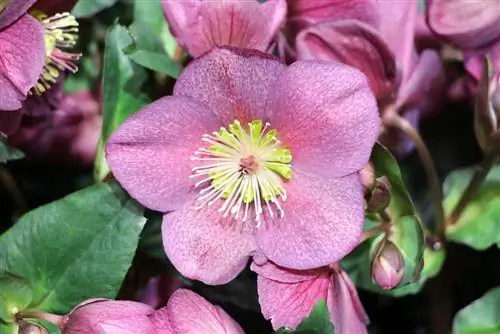
This also applies to plant pots, and it's also worth thinking about the size of a pot. Of course it has to fit the terrace, but in principle plants would grow best if they have 1 liter of pot volume available per gram of dried biomass of the plant. That's a lot, if you take away the 80, 90% water of a magnificent perennial, you'll quickly be left with 100 g of dry herb, which would be a 100 liter bucket. However, this optimum does not have to be the case, and would even not be desirable for container cultivation, because the plant would then develop powerful roots, as in nature, and would start growing quite late in the upper area. If the roots don't get as much freedom as possible, things tend to start in the upper area, but with perennial plants (some perennials such as Christmas roses and daisies live for decades), a fairly large planter can promote good root development and thus overall splendid plant development.
Large pots on the terrace also expand your options: you can arrange different perennials in one pot, more soil volume does not necessarily allow roots to grow wider, but they also extend more deeply. Of course, you shouldn't put several shallow-rooted plants next to each other, as they would prefer to root through a terrace-sized container in a 10 cm layer of soil. Rather, you should combine deep-rooted perennials with medium-deep-rooted perennials and place a spreading, shallow-rooted plant right at the top of the earth's surface, so that everyone gets something out of their big pot. If you want to design with a “garden-like effect” - calming, relaxing, as much mood-enhancing, blooming green as possible - you should then make sure that you use balcony boxes/pots that are as similar as possible in effect, color and material.
Conclusion
With the flowering autumn perennials, you can easily transform your balcony and terrace into small flowering gardens, which, if you choose the plant containers carefully, are just as relaxing and enjoyable as a real flower garden. The balcony and terrace garden doesn't always have to be just calming and relaxing, balcony boxes and pots can also be decorated in a really eye-catching way from time to time. You can find ideas for autumn and Christmas decorations in other articles about autumn, winter, balconies and terraces.

